How do Clear Aligners work?
Traditional braces pull your teeth into position as the dentist tightens up the wires running through the brackets. Clear aligners work in the opposite way by gently pushing your teeth along until they reach their ideal spot. As this happens, they may mildly rotate your teeth to straighten them out and align the upper and lower rows.
You’ll notice the pressure in the first 24 hours after switching to the next aligner in the set. That’s because your teeth actually move that 0.3 millimeters in a single day. But don’t worry, there’s no gum bleeding or severe pain to worry about. The next fourteen days are dedicated to using the aligners to hold your teeth in their new position while your bones and gums heal. Then, you’ll get to switch it up again and take a big step toward the goal line.
You’re not going to achieve perfection in a single day. You have to measure your progress in baby steps, literally 1/3 of a millimeter per aligner, and give your body enough time to adjust.

You Must Commit to Caring for Your Aligners
It is not just about waiting around, however. You must take an active role in your treatment to ensure the clear aligners can do their job properly. That means caring for your aligners like they are your lifeline to the straightest teeth possible, because they are.
At each meal, for example, you need to pop them out and put them to the side while you eat and drink. This is also important when you are just taking a sip of anything but water. Neglecting to do so can trap bacteria between your teeth and the aligner material, resulting in cavities galore.
And before you pop them back in place, give the aligner a quick rinse. Also, remember to clean them with any specialized cleansers, like denture cleaner, recommended by your dentist at least once a day. You can even scrub them up with a new, soft toothbrush and your preferred antibacterial soap —no toothpaste needed (except for your teeth, of course!).
Cases that can be treated with Ezclear Aligners
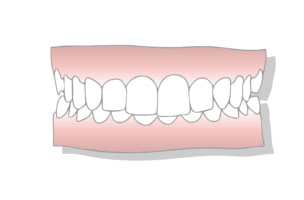
Overbite
An overbite is a class II malocclusion that occurs when the lower jaw is in an improper position. As a result, the upper teeth and jaw have too much overlap with the lower teeth and jaw. It can be attributed to genetics (skeletal), childhood sucking habits (dental), or a combination of the two.
An overbite should be treated as soon as possible. If it is left untreated, there is a higher risk of developing a jaw disorder, gum disease, or tooth decay over time.
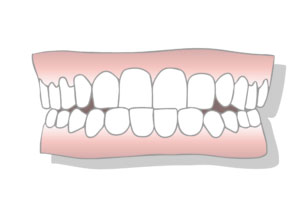
Underbite
An underbite is a class III malocclusion that occurs when the lower jaw is pushed forward. As a result, the lower teeth and jaw overlap the front teeth and jaw. There are two different types of underbites, including dental or skeletal.
A dental underbite is usually caused by a crossbite, while a skeletal underbite is caused by a malformation of the jawbone (genetics). Similar to an overbite, an underbite should be treated as early as possible to prevent the development of other dental conditions.
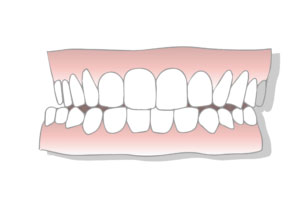
Crossbite
A crossbite is a class II malocclusion that occurs when a few bottom teeth are located outside the upper teeth when the mouth is closed. Genetics, mouth breathing, delayed permanent teeth eruption, and childhood habits (e.g. thumb sucking) can cause this form of malocclusion.
Many people confuse crossbites and underbites, but they are completely different forms of malocclusion. Although, someone with an underbite typically has a crossbite. This form of malocclusion can either affect the anterior teeth, posterior teeth, or both.
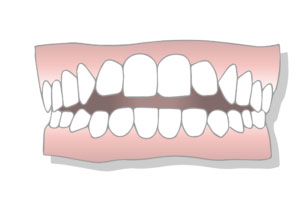
Open Bite
An open bite is the rarest form of malocclusion. It occurs when the upper and lower teeth slant outwards and do not touch when the mouth is closed. An open bite can either affect the anterior teeth or posterior teeth.
Skeletal (genetic) or dental (irregular tooth eruption) factors can cause this condition. Additionally, untreated open bites typically result in speaking problems and issues tearing and chewing food.
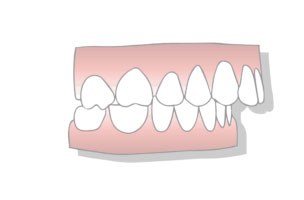
Overjet
An overjet (upper front teeth protrusion) is usually caused by a class II malocclusion, which is when the upper teeth are ahead of the lower teeth.
Overjets can be attributed to genetic factors, childhood habits, and/or irregular skeletal development. Untreated overjets can result in temporomandibular joint disorder (TMD).
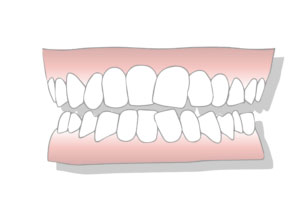
Crowded Teeth
Dental crowding, also referred to as crowded teeth, occurs when there is not enough space in the mouth for permanent teeth to grow in straight. Crowding is a class I malocclusion that typically only affects the anterior teeth.
This form of malocclusion can be due to abnormal jaw development (genetics), irregular tooth eruption or loss, and normal aging.
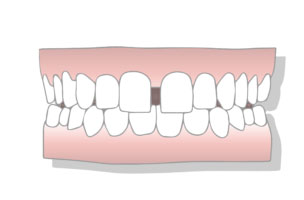
Diastema (Gapped Teeth)
Diastema is when there is a space or gap between two or more teeth. Gaps can range from barely noticeable to large. Midline diastema, which appears as a gap between the two upper front teeth, is the most common.